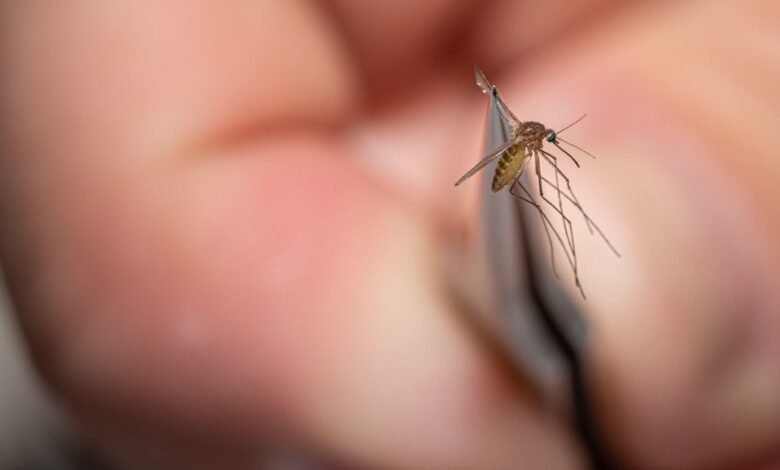Minnesotans Warned: Protect Yourself NOW from Deadly West Nile Virus!

Protecting Your Health: A Deep Dive into the West Nile Virus in Minnesota
As summer unfolds in Minnesota, the state experiences not only longer days and warmer weather but also a heightened risk of mosquito-borne illnesses. Among these, the West Nile Virus (WNV) stands out as a significant concern for public health officials. Given the increase in reported cases in recent years, health leaders in Minnesota are urging residents to take proactive steps to safeguard themselves against this potentially dangerous virus. This blog post aims to explore the West Nile Virus, its transmission dynamics, prevention strategies, and the implications for public health in the state.
Understanding West Nile Virus
The West Nile Virus is primarily transmitted through the bites of infected mosquitoes. While humans are considered incidental hosts—meaning they usually do not spread the virus to other mosquitoes—understanding its lifecycle is crucial for prevention. The virus was first detected in Uganda in 1937 and has since spread to various parts of the world, including North America, where it was identified in 1999.
In Minnesota, the virus is carried mainly by the Culex pipiens mosquito species, which are commonly found in stagnant water sources such as ponds, marshes, and even flower pots. Although not all mosquitoes carry the virus, the presence of these insects during warm summer months significantly elevates the chances of transmission.
Recognizing the Symptoms
Most individuals infected with the West Nile Virus experience mild to no symptoms, but approximately 1 in 150 people can develop severe illness. Symptoms can take anywhere from 3 to 14 days after a mosquito bite to manifest and may include:
- Fever
- Headaches
- Nausea and Vomiting
- Muscle Weakness
- Confusion
- Seizures and Coma
Those experiencing severe symptoms should seek medical attention immediately, as complications can lead to neurological diseases and even death.
Current Landscape in Minnesota
As of 2023, health officials in Minnesota have noted a rise in confirmed cases of the West Nile Virus. The Minnesota Department of Health (MDH) has reported several cases that have demonstrated the virus’s active presence in the state. With more people engaging in outdoor activities during the summer months, the likelihood of mosquito bites increases, thereby amplifying the risk of WNV infections.
Officials are closely monitoring the disease’s trajectory, employing various strategies to control the mosquito population and reduce the risk of outbreaks. They have intensified surveillance efforts and continued to educate the community on preventative measures. The urgency of these measures is underscored by the fact that most cases occur in August and September—months when mosquito activity peaks.
Preventive Measures: A Community Responsibility
To combat the risk of West Nile Virus, health experts recommend several preventive actions that individuals and the community can take:
1. Eliminate Standing Water
One of the most effective ways to reduce mosquito populations is to eliminate potential breeding sites. This involves:
- Regularly cleaning out bird baths and pet water dishes.
- Covering or emptying containers that collect rainwater.
- Maintaining proper drainage systems around homes.
2. Use Insect Repellent
When heading outdoors, applying EPA-approved insect repellents can significantly decrease the likelihood of bites. Look for products containing:
- DEET
- Picaridin
- IR3535
- Oil of Lemon Eucalyptus
Be sure to follow the manufacturer’s instructions for safe application.
3. Wear Protective Clothing
Outfit yourself in long sleeves, long pants, and socks when spending time in areas known to harbor mosquitoes. Choosing lighter colored fabrics can also help, as mosquitoes are more attracted to dark colors.
4. Avoid Peak Mosquito Hours
Mosquitoes are most active during dawn and dusk. If possible, try to limit outdoor activities during these times, especially in heavily infested areas.
The Role of Public Health Officials
Public health officials are integral in combatting the spread of West Nile Virus. Their roles encompass:
- Surveillance: Monitoring mosquito populations and tracking reported cases.
- Education: Disseminating information and resources to help the public understand the risks and preventive measures.
- Control Measures: Implementing mosquito control strategies, including larvicides and fogging, when necessary.
Community Outreach and Awareness
Community engagement is essential for successful prevention efforts. Local initiatives often host information sessions and distribute materials with tips for reducing mosquito habitats and promoting personal protection. Collaborations between public health departments, community organizations, and educators are vital in spreading knowledge and resources.
The MDH has highlighted the significance of community involvement in monitoring for West Nile Virus cases and understanding its implications. By fostering a culture of awareness, residents can work together to create a safer environment.
The Future: Continued Vigilance is Key
As we move through the summer months, health leaders continue to celebrate the advancements in public health strategies while emphasizing the need for vigilance against the West Nile Virus. With increased awareness and proactive behaviors, the impact of this virus can be minimized.
By following recommended preventive actions, participating in community initiatives, and remaining informed about the virus’s status, Minnesotans can play a pivotal role in safeguarding their health and that of their neighbors.
The ultimate goal is not just to reduce the incidence of West Nile Virus but to foster a culture of health and wellness that extends beyond mosquito-borne diseases. The ongoing education and adaptation of strategies will be essential as we navigate the complexities of public health in Minnesota and beyond.
Conclusion
The resurgence of West Nile Virus in Minnesota serves as a salient reminder of the importance of community and personal vigilance in public health. As summer activities commence, it is vital for all residents to heed the advice of health officials and take proactive measures against mosquito bites. In doing so, we can all contribute to a safer and healthier Minnesota.
Summary of Key Points
- West Nile Virus is primarily transmitted through mosquito bites and poses a risk mainly during the summer months in Minnesota.
- Symptoms range from mild to severe, with some individuals developing neurological complications.
- Health leaders in Minnesota are observing an increase in cases and emphasize the importance of preventive measures.
- Effective strategies include eliminating standing water, using insect repellent, wearing protective clothing, and avoiding peak hours of mosquito activity.
- Public health officials play a crucial role in monitoring, educating, and implementing control measures to combat the virus.
- Community engagement and awareness are vital in minimizing the impact of the West Nile Virus and fostering a culture of health and safety.





